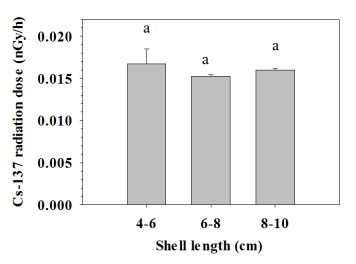Relationship of Genetics and Cs-137 in Asian Green Mussel (Perna viridis) from Nuclear Activities in Asia-Pacific Region
Main Article Content
Abstract
This study focuses on the relationship of genetics and Cs-137 radiation doses in Asian green mussel (Perna viridis) collected from Chonburi province, Thailand. They might accumulate the radiocaesium from the nuclear power plants in the Asia-Pacific region including the Fukushima-Daiichi nuclear power plant via their routine or accidental releases. The radiation doses, estimated using ERICA Tool in the bivalves categorized into 3 different size classes including 4-6, 6-8, and 8-10 cm, were below 0.02 nGy/h. In parallel, Micronucleus test and Comet assay were used to investigate genetic responses in the mussels. They revealed minimum micronucleus frequency (MNF) and %Tail DNA varying from 1.80-2.90% and 1.36-1.70%, respectively. The result indicates that neither particular accumulation of Cs-137 nor genetic responses among different size classes of the animals were observed. Furthermore, the radiation doses in the mussels were below the dose limit of 10 µGy/h. Therefore, no radiation effect caused by Cs-137 was found and it was also confirmed by minimal genetic damages. Data obtained can be used as site-specific data for radiological dose and impact assessment and as baseline data to establish the national radiation safety levels to protect Thai marine biota from any possible future nuclear accidents.
Article Details
Published articles are under the copyright of the Environment and Natural Resources Journal effective when the article is accepted for publication thus granting Environment and Natural Resources Journal all rights for the work so that both parties may be protected from the consequences of unauthorized use. Partially or totally publication of an article elsewhere is possible only after the consent from the editors.

